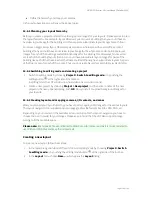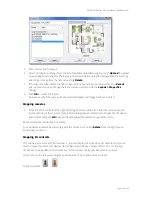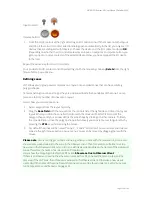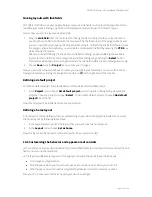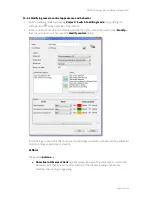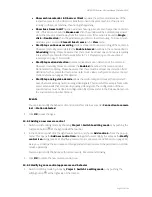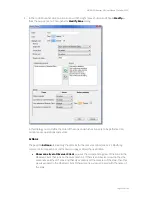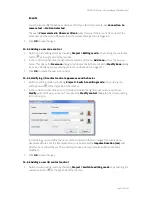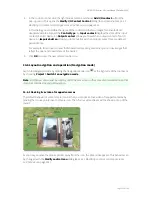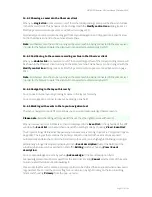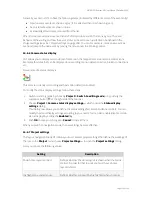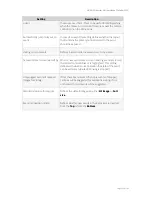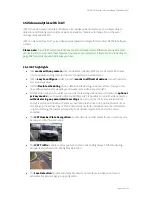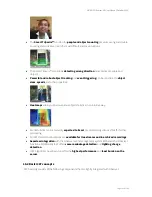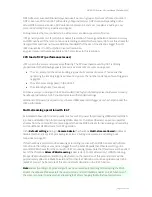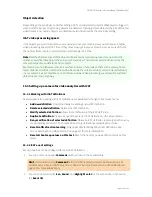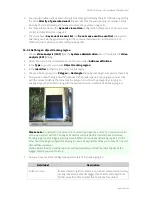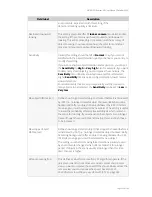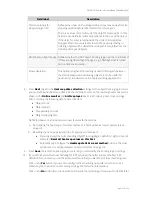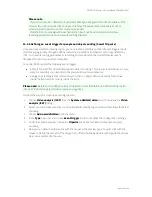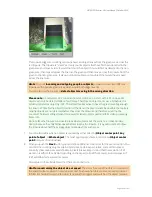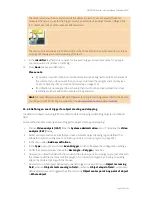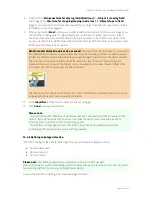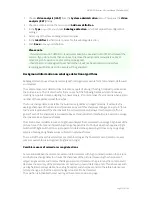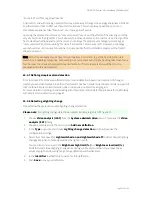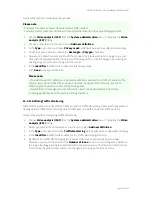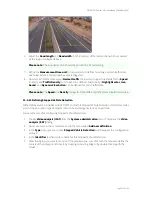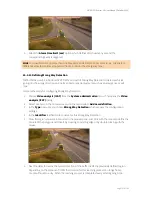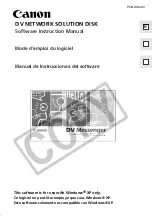
NETAVIS Observer 4.6 User Manual (October 2015)
Page 142 of 204
1.
An object detection and tracking engine analyzes the video stream and tracks detected objects.
Please be aware that an object has to show consistent motion first in order to be detected and
tracked.
2.
An event logic engine with configurable event triggers decides when a tracked object triggers an
event.
3.
A real-time statistics module stores statistical information about various aspects of objects like
object sizes and speeds.
For setting up a camera with iCAT you essentially configure the following things:
Object tracking region
: The object tracking region defines the part of the camera view in which iCAT
is detecting and tracking objects. For each camera you can define one tracking region that is either the
full camera view or a part of it in the form of a polygon or rectangle. No object will be detected or
tracked outside of this tracking region. Since the CPU overhead caused by iCAT is directly proportional
to the size (area) of all the active tracking regions of all active cameras of a server, optimizing the
tracking regions will save CPU power. Region definitions can also be used to mask out problematic
areas in the scene as well (e.g. swaying trees).
For each tracking region you can also define what object statistics should be measured by iCAT. Such
statistics can then be visualized.
Event triggers
: Each camera can have several event triggers that define under what conditions an
event is generated by the detected objects. Event triggers only work inside of the object tracking
region. Examples of event triggers are people or object counters and detectors of stopped or started
objects. The CPU load caused by event triggers compared to the tracking region is negligible.
Scheduling
: The standard Observer scheduling mechanisms are also used for scheduling (activating)
various iCAT setups. For example, it is possible to have different iCAT settings for weekdays and
weekends.
15.2.1 Considerations for setting up a system with iCAT
Camera selection and placement
Though iCAT is able to analyze video captured by any type of supported camera, using a device with
higher image quality will result in better detection and tracking.
Generally the iCAT algorithms work with in- and outdoor cameras as well as for different perspectives.
The configuration of the algorithms in Observer is pretty simple, as you will see below.
For people and object counting, the best results are possible if the camera is mounted overhead
downward looking.
Please note:
Setting up iCAT definitions for PTZ cameras is problematic since most of the iCAT
functions require a fixed camera position.
Video streams and formats
iCAT works with any video camera. If the camera can provide an MJPEG stream, iCAT uses this format
because it is the most efficient for video analytics. If the camera provides only MPEG formats (MPEG-4,
H.264, and MxPEG) then iCAT can also work on these streaming formats. However, please be aware
that video analytics in MPEG streams requires a lot more CPU power than in MJPEG streams since the
decoding is much more complex (for multi-stream operation please see below). Also video analytics in

